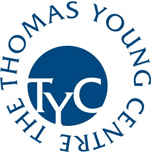A description of the electronic excitations in materials and molecules is central to understanding the key optical, transport and reactive properties. While density functional theory often describes ground state energetics to reasonable accuracy, it will often more qualitatively fail in its description of these excitations, and therefore methodological development which can go beyond DFT is of central importance for a theorists toolkit. In this mini-symposium, we will hear from three researchers at the cutting edge of this field, developing approaches for 'Beyond density functional theory for predictive excitations': Neepa Maitra (Rutgers University), Marc Dvorak (Aalto University), Fillipp Furche (UC Irvine).
Time: 3-5pm
Venue: Join Zoom Meeting https://ucl.zoom.us/j/92519971654pwd=T3M4aHM1NjJTTjA1NEczSVAza1d2UT09
Meeting ID: 925 1997 1654
Passcode: TYCSymp
Contact: George Booth
Email: tyc-administrator@ucl.ac.uk
Quantum embedding for strongly-correlated systems - Marc Dvorak - Aalto University, Finland
I will introduce the concept and theory behind our new quantum embedding theory named dynamical configuration interaction (DCI) [1,2]. DCI is based on the Löwdin partitioning of the Hilbert space into an active space and a bath. In the active space, an energy-dependent, effective Hamiltonian is solved with exact diagonalization. The key feature of DCI to reduce the computational cost is the efficient computation of matrix elements of the effective Hamiltonian. Matrix elements from the bath space are calculated in a quasiparticle picture based on a renormalized Hamiltonian instead of the bare many-body Hamiltonian. We adopt a GW- and constrained RPA-based quasiparticle Hamiltonian and extend it to arbitrary excitation levels (single, double, triple, etc.) by including inter-quasiparticle interactions. Including correlation at the quasiparticle level allows us to adopt a block-diagonal approximation in the bath space, reducing the computational cost, while maintaining good accuracy. The final theory treats dynamic correlation at the GW level while providing a multireference treatment of the active space. I will show ground and excited state results for dimer dissociation, small molecules, and porphyrin. Finally, I will outline work-in-progress extensions of the theory meant to incorporate feedback from the active space to the bath via an additional level of self-consistency. [1] Quantum embedding theory in the screened Coulomb interaction: Combining configuration interaction with GW/BSE, Phys. Rev. Materials 3, 070801(R). [2] Dynamical configuration interaction: Quantum embedding that combines wave functions and Green's functions, Phys. Rev. B 99, 115134.
Filipp Furche - University of California at Irvine
Recent benchmark calculations for supramolecular complexes with 4-206 atoms have shown that relative errors in binding energies from second-order Møller-Plesset (MP2) many-body perturbation theory (MBPT) increase systematically with with the system size at a rate of approximately 1% per valence electron [1]. To analyze these unexpected results, a mul- tivariate adiabatic connection (MAC) framework for describing dispersion interactions in a system consisting of N non-overlapping monomers is developed. The exact dispersion en- ergy is obtained from the zero-temperature fluctuation-dissipation theorem and partitioned into increments corresponding to the interaction energy gained when an additional monomer is added to a K-monomer system. Dispersion size-consistency generalizes “Casimir-Polder size-consistency” [2] and is defined as the requirement that the total dispersion energy be independent of any partitioning; this is an exact constraint. MBPT is found to violate dis- persion size-consistency, whereas random phase approximation-type methods [3] preserve it by correctly including dispersion polarization effects. Implications of the lack of dispersion size-consistency in perturbative approaches and methods derived from them are discussed. Dispersion polarization is likely important for applications to large and polarizable sys- tems such as nanocrystals, metallic nanoparticle or nanowire arrays, or large polarizable biomolecules. References [1] B. D. Nguyen, G. P. Chen, M. M. Agee, A. M. Burow, M. Tang, F. Furche, J. Chem. Theory Comput. 16 (2020), 2258. [2] T. Gould, J. Toulouse, J.G. Ángyán, J. F. Dobson, J. Chem. Theory Comput. 13 (2017), 5829. [3] G. P. Chen, V. K. Voora, M. M. Agee, S. G. Balasubramani, F. Furche, Annu. Rev. Phys. Chem. 68 (2017), 421.
TDDFT for Photo-Excited Dynamics: Formulations to By-Pass Memory-Dependence - Neepa Maitra, Rutgers
Describing the dynamics of molecules driven far from their ground-state is challenging for approximate TDDFT to describe reliably, because most functionals in use today model the exchange-correlation effects as if the system was in a ground state. We demonstrate memory dependent features that the exact functional has that are lacking in these calculations. Sometimes, the problem of interest can be reformulated so as to need the exchange-correlation functional to be evaluated only in the linear response domain, even when describing processes that are non-perturbative, and this increases the reliability of the predictions. We discuss this for the case of Ehrenfest dynamics of photo-excited states, and elastic electron-electron scattering problems.
Time: 3-5pm
Venue: Join Zoom Meeting https://ucl.zoom.us/j/92519971654pwd=T3M4aHM1NjJTTjA1NEczSVAza1d2UT09
Meeting ID: 925 1997 1654
Passcode: TYCSymp
Contact: George Booth
Email: tyc-administrator@ucl.ac.uk
Quantum embedding for strongly-correlated systems - Marc Dvorak - Aalto University, Finland
I will introduce the concept and theory behind our new quantum embedding theory named dynamical configuration interaction (DCI) [1,2]. DCI is based on the Löwdin partitioning of the Hilbert space into an active space and a bath. In the active space, an energy-dependent, effective Hamiltonian is solved with exact diagonalization. The key feature of DCI to reduce the computational cost is the efficient computation of matrix elements of the effective Hamiltonian. Matrix elements from the bath space are calculated in a quasiparticle picture based on a renormalized Hamiltonian instead of the bare many-body Hamiltonian. We adopt a GW- and constrained RPA-based quasiparticle Hamiltonian and extend it to arbitrary excitation levels (single, double, triple, etc.) by including inter-quasiparticle interactions. Including correlation at the quasiparticle level allows us to adopt a block-diagonal approximation in the bath space, reducing the computational cost, while maintaining good accuracy. The final theory treats dynamic correlation at the GW level while providing a multireference treatment of the active space. I will show ground and excited state results for dimer dissociation, small molecules, and porphyrin. Finally, I will outline work-in-progress extensions of the theory meant to incorporate feedback from the active space to the bath via an additional level of self-consistency. [1] Quantum embedding theory in the screened Coulomb interaction: Combining configuration interaction with GW/BSE, Phys. Rev. Materials 3, 070801(R). [2] Dynamical configuration interaction: Quantum embedding that combines wave functions and Green's functions, Phys. Rev. B 99, 115134.
Filipp Furche - University of California at Irvine
Recent benchmark calculations for supramolecular complexes with 4-206 atoms have shown that relative errors in binding energies from second-order Møller-Plesset (MP2) many-body perturbation theory (MBPT) increase systematically with with the system size at a rate of approximately 1% per valence electron [1]. To analyze these unexpected results, a mul- tivariate adiabatic connection (MAC) framework for describing dispersion interactions in a system consisting of N non-overlapping monomers is developed. The exact dispersion en- ergy is obtained from the zero-temperature fluctuation-dissipation theorem and partitioned into increments corresponding to the interaction energy gained when an additional monomer is added to a K-monomer system. Dispersion size-consistency generalizes “Casimir-Polder size-consistency” [2] and is defined as the requirement that the total dispersion energy be independent of any partitioning; this is an exact constraint. MBPT is found to violate dis- persion size-consistency, whereas random phase approximation-type methods [3] preserve it by correctly including dispersion polarization effects. Implications of the lack of dispersion size-consistency in perturbative approaches and methods derived from them are discussed. Dispersion polarization is likely important for applications to large and polarizable sys- tems such as nanocrystals, metallic nanoparticle or nanowire arrays, or large polarizable biomolecules. References [1] B. D. Nguyen, G. P. Chen, M. M. Agee, A. M. Burow, M. Tang, F. Furche, J. Chem. Theory Comput. 16 (2020), 2258. [2] T. Gould, J. Toulouse, J.G. Ángyán, J. F. Dobson, J. Chem. Theory Comput. 13 (2017), 5829. [3] G. P. Chen, V. K. Voora, M. M. Agee, S. G. Balasubramani, F. Furche, Annu. Rev. Phys. Chem. 68 (2017), 421.
TDDFT for Photo-Excited Dynamics: Formulations to By-Pass Memory-Dependence - Neepa Maitra, Rutgers
Describing the dynamics of molecules driven far from their ground-state is challenging for approximate TDDFT to describe reliably, because most functionals in use today model the exchange-correlation effects as if the system was in a ground state. We demonstrate memory dependent features that the exact functional has that are lacking in these calculations. Sometimes, the problem of interest can be reformulated so as to need the exchange-correlation functional to be evaluated only in the linear response domain, even when describing processes that are non-perturbative, and this increases the reliability of the predictions. We discuss this for the case of Ehrenfest dynamics of photo-excited states, and elastic electron-electron scattering problems.










